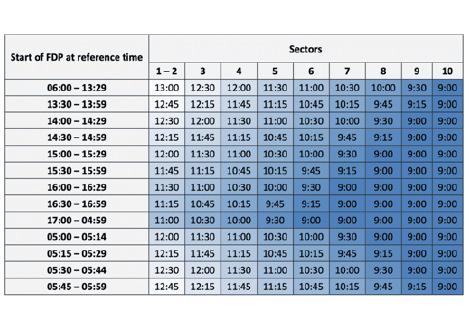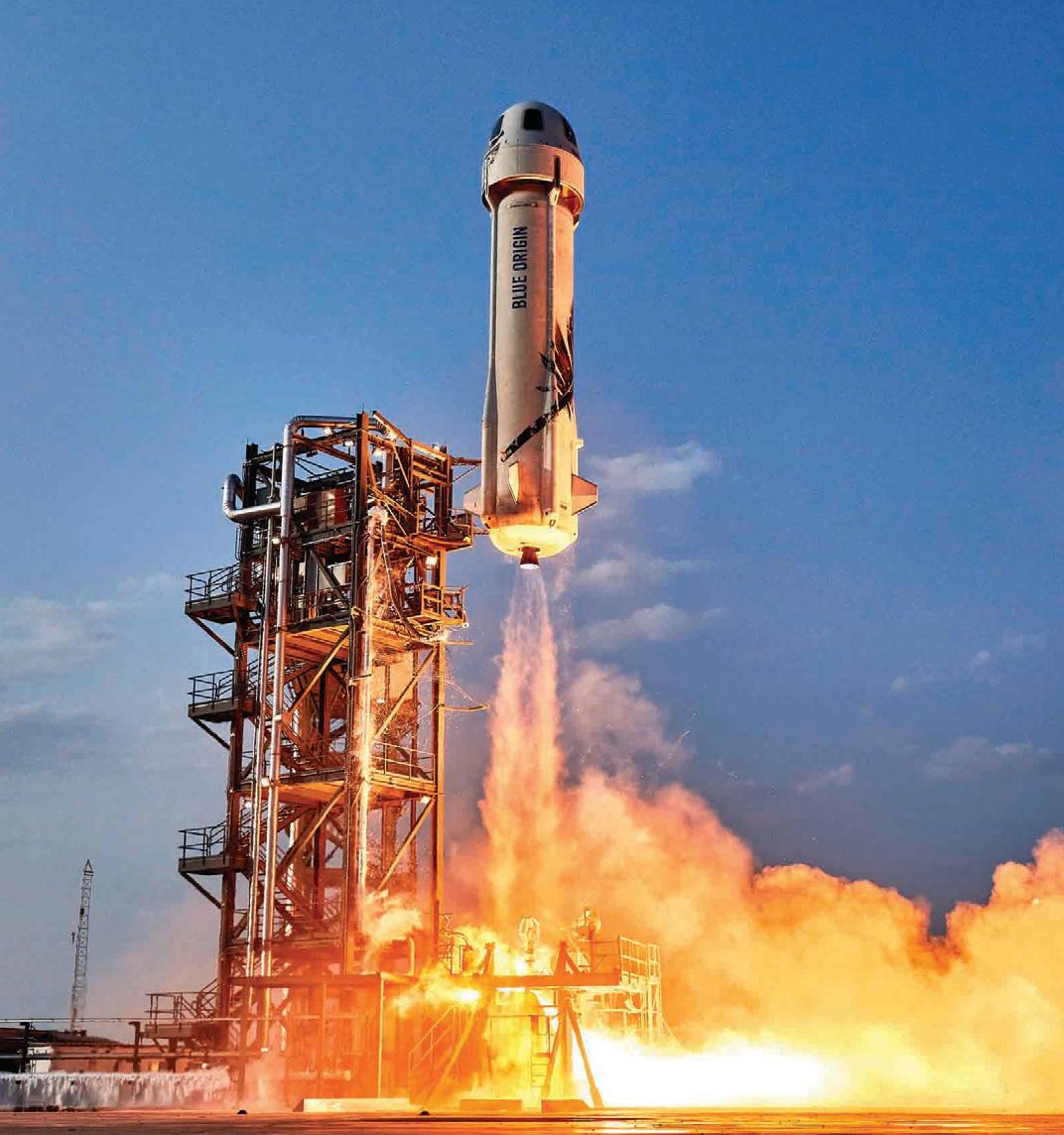
8 minute read
Aircraft Development
Is Speed the Future of Business Travel?
After exploring the world of eVTOL in a three-part series, Fabrizio Poli continues to look towards the future of BizAv, this time looking at speed. What does the future hold for Supersonic aircraft and beyond…?
Advertisement
The year 2021 has been interesting for the leading business jet OEMs. In the same year Aerion ended its AS2 supersonic private jet project, Dassault launched the Falcon 10X, and Gulfstream rolled-out the G800 Ultra-Long-Range jets.
These announcements mean that Bombardier’s Global 7500 will be joined by Gulfstream’s G800 and Dassault’s Falcon 10X at the top of the business jet market. Indeed, there is only a 200nm, and $2m, difference between them all (2021 prices).
With ranges above 7500nm, crucially, they all offer the same maximum cruise speed. While they are quick, it is still feasible for a non-stop flight to last around 16 hours, which would exceed flight crew limitations.
Flight Time Limitations
Unfortunately, the type of money that buys a business jet in the Ultra-Long-Range jet arena still cannot secure flight crew with super-endurance. In fact, over the last ten years pilot fatigue has been playing a growing role in the cause of aircraft accidents.
Every aviation authority, be it EASA, the FAA, or other authority, publishes strict guidelines when it comes to how long aeronautical professionals can work. These come with certain flexibilities such as “commander’s discretion” or “extended duty periods” (more on that later).
Nevertheless, the table (right) depicts the basic European Flight Time Limitations. Crews rarely do one sector a day (a sector is a flight), so, as you can see, for those early morning departures, the maximum amount of time a crew can work is 12 hours.
Aviation authorities have also introduced overall flight time limitations. These consider the total time that a crew member spends working. They are: • 900hrs in a calendar year, and • 1,000hrs in a rolling 12-month period.
This means that if you are on a Los Angeles to Tokyo flight (6,500nm/14hrs) you are going to need an extra crew member.
Bear in mind these private jets aren’t as big as a Boeing 747 or Airbus A380 and, as I always say, the airplane gets smaller for every hour you spend on it. Add to the fact the galley in a Falcon 7X or Gulfstream G650 can cater well for a group of 4-6 people on a long flight. If you have more than six passengers, you really need an aircraft with a larger galley.
Is Speed the Solution?
Raymond “Ray” Kurzweil is an American author, computer scientist, inventor, futurist and co-founder of Singularity University. In his essay titled: The Law of Accelerating Returns, he stated:
“An analysis of the history of technology shows that technological change is exponential, contrary to the common-sense “intuitive linear” view. So, we won’t experience 100 years of progress in the 21st century — it will be more like 20,000 years of progress (at today’s rate).”
In Richard Florida’s book ‘Great Reset’, he talks about average transportation speeds and number of miles the average person will travel in their lifetime. • In the year 1850 – The average speed of 4mph, traveling four miles per day, multiplied by a 50-year life expectancy, equaled 73,000 miles. • In the year 1900 – The average speed of 8mph, traveling eight miles per day, multiplied by a 60year life expectancy, equaled 175,200 miles. • In the year 1950 – The average speed of 24 mph, traveling 24 miles per day, multiplied by a 70-year life expectancy, equaled 613,200 miles. • In the year 2000 – The average speed of 75 mph, traveling 75 miles per day, multiplied by an 80-year life expectancy, equaled 2,190,000 miles. • In the year 2050 – The average speed is projected to be 225-250 mph, traveling 225 miles per day, multiplied by a 90-year life expectancy, equaling 7,391,250 miles.

Over a 200-year period we are seeing humankind transitioning from a slow and difficult form of transportation to fast and painless. Going from 73,000 to 7.3 million is a 100-fold increase in human mobility, while the increase in average speed from 4mph to 225mph represents a 56.25 multiplication in speed increase.
Now, consider the technological changes society has experienced just between 1850 and 2000…
Having a look at the utilization of most Ultra-LongRange private jets and the VVIP airliner market, there is probably a market for 200 supersonic private jets.
Boom Aerospace is building the Overture which will fly 55 passengers First Class at 1.7 Mach. It has received orders from Japan Airlines, Virgin Atlantic and United Airlines, and this project certainly looks like it will get to market.
By building for the airlines, Boom Aerospace’s business strategy will bring the price per jet down, opening the market for a VVIP version. It would be easy to imagine an Overture configured in VVIP layout for eight or 10 passengers, with extra tanks added to give extend its range.
What About More Speed?
Science fiction writer Ben Bova in his novel, ‘Moonrise’ talks about Clipperships, which are rockets flying people from anywhere to anywhere on earth in less than an hour.
In the 1990s Pete Conrad, Apollo 12 astronaut who walked on the Moon in 1969, worked at McDonnell Douglas to develop the Delta Clipper-X. This was a reusable rocket shuttle that would take off and land vertically. But McDonnell Douglas abandoned the Clipper-X, and Conrad’s attempt to start his own passenger rocketry company, Universal Space Lines, went nowhere.
This however could become reality soon. SpaceX CEO Elon Musk said, during his keynote speech in 2017 meeting of the International Astronautical Congress in Adelaide, Australia, “If you build a ship that’s capable of going to Mars, what if you take that same ship and go from one place to another on Earth?”
His answer: City-to-city rocket service, the fastest commercial transit ever created. Basic ballistic physics yields some amazing travel times. Los Angeles to Tokyo would take 32 minutes. A trip from New York to Los Angeles, which currently takes between 5 and 6 hours, would be reduced to 25 minutes. The 15-hour flight from New York to Shanghai would take just 39 minutes.
We just witnessed Star Trek actor William Shatner prove that even a 90-year-old can travel on a rocket, during his 10-minute ride to space on Jeff Bezos’ Blue

Origin reusable rocket. While this did take-off and land in Texas, it could have easily landed in Australia with a few more minutes’ flight…
SpaceX released an animation showing the rockets leaving from, and arriving on, offshore platforms just outside of each city.
Musk, meanwhile, said that trips to Mars would carry about 100 people. However, he also said that his rocket cabin had the capacity of an Airbus A380, which can hold more than 850 passengers.
For those of you thinking that using rockets for longhaul travel would be expensive, that is true if the rocket is used only once. But, because of the reusability of today’s rockets the cost has dropped – and by carrying 850 passengers, the cost per seat will be close to a FirstClass ticket on an A380.
Better & Cleaner Technology?
In May 2019, I interviewed Aerospace Engineer & Researcher, Michael Schratt, for an episode of Biz Jet TV on YouTube, asking ‘Could the TR-3B be the next private jet?’ (https://www.youtube.com/watch?v= LXOsGlZJIN8&t=1s). The TR-3B doesn't exist, officially.
In the interview Schratt referred a lot to Ben Rich, who was an American engineer and the second Director of Lockheed’s Skunk Works from 1975 to 1991. Regarded as the “father of stealth”, Rich was responsible for leading the development of the F-117, the first production stealth aircraft. He also worked on the F-104, U-2, A-12, SR-71 and F-22.
Schratt explains the TR-3B uses highly pressured mercury accelerated by nuclear energy to produce a plasma that creates a field of anti-gravity around the ship and also causes it to be almost invisible on radar and to remain undetected. This literally means that it can go to any country it likes without being detected by air traffic control and air defence systems.
While I found the conversation with Mr Schratt intriguing – and borderline science fiction – what fascinated me the most was the over 100,000 views… and amongst the 600-plus comments, at least 50 people claiming to have seen this flying machine, in various locations around the world.
People are saying the TR-3B lands and takes-off vertically, flies faster than Mach 24 and is very quiet. If this were true, it could be a game changer!
Exponential Jump?
The OEMs compete by making relatively minor improvements, as opposed to making a quantum leap. Over the last 50 years we have seen many technological advancements regarding avionics and navigation, but aircraft are still flying at the same speed.
Futurist Ray Kurzweil talks about technological change being exponential, not linear, so maybe something like rocket travel or the TR-3B type technology could be what lies ahead for private aviation…
More information from www.orvilleaviation.com. ❚
FABRIZIO POLI
is Senior Consultant at Orville Aviation. He is also an Airline Transport Pilot. Mr. Poli has over 35 years experience in the aerospace sector, both as an aviator and in business. Fabrizio is also founder of popular YouTube channel, Biz Jet TV.
UNDERSTAND THE BUSINESS AVIATION MARKETPLACE with AvBUYER.com










